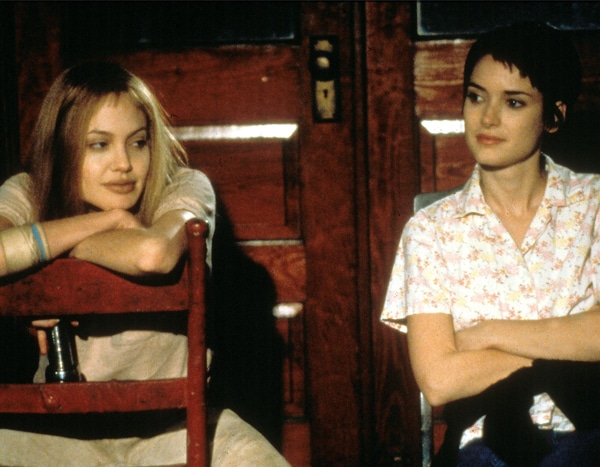
Columbia Pictures
As all the 20-year retrospectives that poured forth this year have reminded us, 1999 was a hell of a year for movies.
From 10 Things I Hate About You and American Pie to The Sixth Sense and The Blair Witch Project, then Fight Club, The Virgin Suicides, Rushmore… all were movies that left a mark on pop culture, even the ones that weren’t fully appreciated in their time.
So, there had already been an embarrassment of riches, but as 1999 drew to a close, just in time for the winter holiday, memorable in its intensity for every teenager who bought a ticket, came Girl, Interrupted.
Five years after starring in Little Women, also a Christmas time release, Winona Ryderwas back with another tale of young women making the best of things in close quarters—in this case a mental institution rather than a cozy little house in Massachusetts—but interestingly still a story about girls finding solace in each other when their lives are spiraling out of control, again starring Ryder as a smart, rebellious heroine who wants more out of life than the opportunities traditionally afforded to women in her time.
1860s, 1960s…
Susanna Kaysen‘s 1993 memoir of the same name is about her time spent in an institution starting in 1967 after a suicide attempt. At the time, when such things (i.e. mental health issues) weren’t openly talked about in polite society, being committed was referred to as “getting some rest.” An 18-year-old Kaysen was told she’d be going for two weeks, to get “a little rest,” but ended up being at McClean Hospital in Belmont, Mass., for a year and a half after being diagnosed with borderline personality disorder.

Producer Douglas Wick acquired the rights to Girl, Interrupted before it even came out and “right away every actress in America sent out feelers saying they wanted to do it,” he recalled in an HBO Making Of featurette.
Ryder was 21 when her father gave her a galley copy of the book, and she immediately wanted to make a movie out of it. She tried to get the rights herself and, finding out Wick had them already, got in touch. So, she was attached to the project from the beginning and Wick said she was “a very vigorous partner” in the creative process.
“When I read the book, I was in a way sad that I hadn’t read it as a teenager. I really could have used that when I was about 16, 17, 18,” Ryder, who served as an executive producer along with her manager Carol Brodie, said in the HBO segment.
And though Girl, Interrupted took place in the 1960s, “it could take place in any time and have the same emotional result,” the Oscar-nominated actress said. “Anybody could end up in one of these places—you or me, or anybody that we know.”
Ryder, in fact, checked herself into a treatment facility when she was 20, suffering from anxiety and insomnia in the aftermath of her painful breakup with Johnny Depp.
“I was overworked and overtired—too tired to sleep,” Ryder told the New York Times before Girl, Interrupted came out. “I was in a really bad state.”
In a sit-down with ABC News’ Diane Sawyer, the actress recalled driving around one night in 1991 and seeing herself on the cover of Rolling Stone. The glowing headline “broke my heart,” she admitted, “because there I was, in so much pain, and feeling so confused, feeling so lost in my life. I wasn’t allowed to complain because I was ‘so lucky,’ you know, and so blessed, and I made a lot of money. My problems weren’t ‘real problems’….and I’m as nauseated as the next person when actors complain about their lives, you know. We are blessed, we are lucky, but the stuff that I was going through was difficult.”
She only stayed in the facility for a week and, when she left, she didn’t feel as if being there had helped at all. “What I learned was that, no matter how rich you are and how much you pay some hospital or doctor, they can’t fix you,” she reflected in another interview. “They can’t give you a pill or a secret answer to anything that’s going to make you all better.”
That was before the Internet had turned the observation of celebrities into a 24/7 sport, before social media turned everyone into an armchair psychologist, and some years before the term “5150 hold” entered the popular lexicon.
To this day a celebrity meltdown is still generally treated more as a headline-making spectacle than a teachable moment, though at least now—slowly but surely—discussions about mental health are far less taboo and increasingly common among high-profile people. Which, in turn, can be vital for those who may feel that there’s something inordinately wrong with them, when in reality they’re having an experience shared in one way or another by countless others.
“I hope the teenagers who feel alone out there will see this movie and say, ‘Thank God,'” Ryder said in 1999. “Because movies like this aren’t really offered, and I would like to offer it. If I had seen this movie at 19, I would have taken a lot of comfort in it… Life is just weird. Life is a mess. This world is a mess, and anyone who understands this world I would worry about… We’re normal to feel crazy, in a way.”
Indeed, almost everyone knows what it’s like to feel as if you’re losing your mind—or at least to be looked at by others as if you are.
James Mangold, then known mainly for the gritty 1997 indie drama Copland that got a lot of attention before it came out because of Sylvester Stallone‘s weight gain for the film (some things don’t change), was “the first person who had a clue” about how to bring Girl, Interrupted to life, Ryder recalled. She had admired his directorial debut, Heavy, about a lonely diner cook whose life gets a needed jolt when a spirited college dropout played by Liv Tyler comes to work as a waitress, and thought Mangold was the man for the job.
It’s easy to forget that the Oscar-nominated writer-director of the Johnny Cash biopic Walk the Line and the intense X-Men spin-offs The Wolverine and Logan was behind Girl, Interrupted, but he was the one who had the gritty vision for the film that won the day. (Coincidentally, Mangold’s latest film, the expansive car-racing epic Ford v Ferrari, is very much in the award season conversation right now, too.)
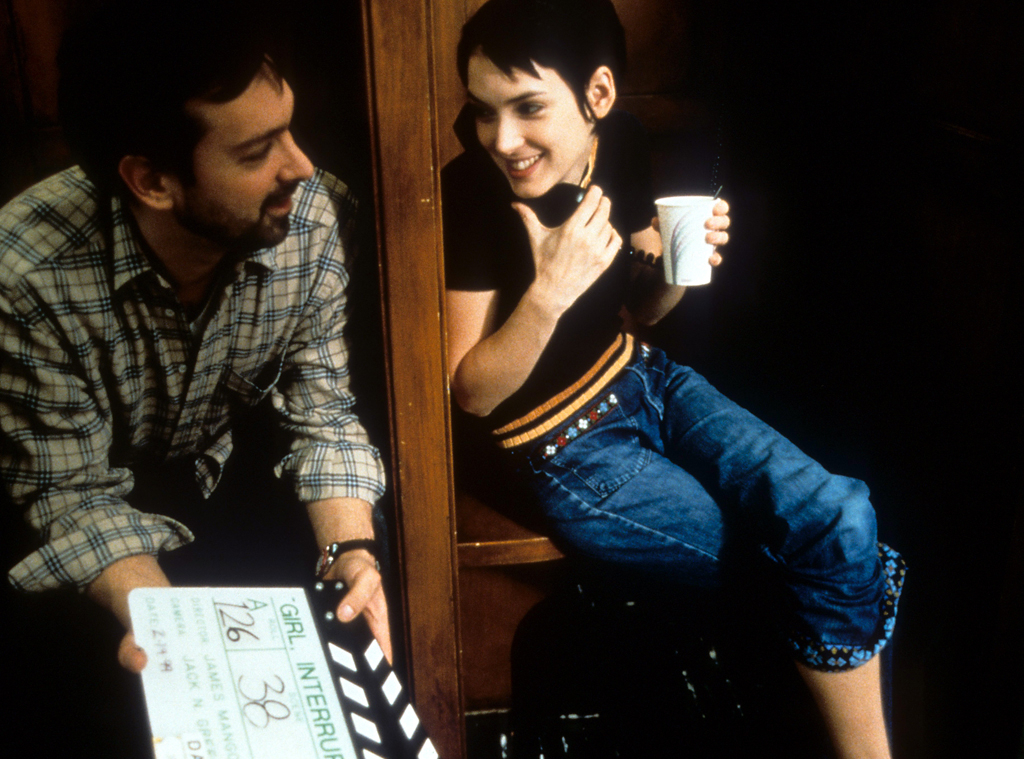
Columbia Pictures/Getty Images
According to Entertainment Weekly in 1998, before filming began, the very of-the-moment young actresses being considered for roles included Gretchen Mol, Alicia Witt, Christina Ricci, Katie Holmes,Kate Hudson, Reese Witherspoon(who’d later win an Oscar for Walk the Line) and Alanis Morissette (who had just made her acting debut playing God in Dogma).
“It’s the only decent thing out there that doesn’t involve taking your clothes off,” Rose McGowan, one of many who read for the film, told EW.
At the time, indie darling Sarah Polley was poised to take a role (she ultimately didn’t), as was up-and-comer Angelina Jolie, who did.
Jolie was earning major praise (and would be nominated for an Emmy and win a Golden Globe) for her breakout performance in the HBO biopic Gia, about the rise and horrific fall of supermodel Gia Carangi, but was not yet a movie star—all of which would change in 1999. But Ryder insisted they cast Jolie, and the role of diagnosed sociopath Lisa, Susanna’s closest friend in the institution, greatly appealed to her.
Which, in hindsight, isn’t at all surprising.
“They’re just normal people who follow their impulses and instincts completely,” Jolie said on HBO at the time about the ensemble of patients in the film. Her Lisa, in particular, is endlessly charismatic, obviously intelligent and, as seen through Susanna’s observant eyes, unfazed by the psychobabble they’re being fed by assorted doctors. Yet Susanna eventually realizes that Lisa, for all her world-weary wisdom, is nonetheless unstable.
“She lived too big, was too honest, was too hungry, was too full of life,” Jolie described the character to Rolling Stone in 2001, by then rather misunderstood herself as one-half of “America’s most dangerous marriage” and a behavioral wild card with too many tattoos, too many quirks and a seemingly unhealthy fixation on husband Billy Bob Thornton.
The actress, who acknowledged identifying with Lisa, continued, “At the end of the film there’s a certain sense of them saying to Lisa, ‘Nobody wants you to live, nobody likes the way you are—you’d be better off if you were sedated and tied down and shut up…If you feel that you’re the kind of person she is, then it’s really hard, because you’re struggling with, ‘F–k, am I just damaging to people everywhere?
“Am I just too loud and too wild and do I just need to let everybody live their lives and shut up and calm down?'”
The conversation had evidently touched a nerve.
Ultimately Girl, Interrupted‘s main ensemble consisted of Ryder, Jolie, Brittany Murphy, Clea DuVall, Elisabeth Moss and Jillian Armenante, with Whoopi Goldbergplaying nurse Valerie, Vanessa Redgrave and Jeffrey Tambor as resident psychiatrists, and Jared Letoas Susanna’s boyfriend from the outside who knows she isn’t crazy and can’t understand why, after awhile, she doesn’t mind being there so much.
Ryder told E! News at the time that she wanted to surround herself with the very best group of actors possible, the better to elevate her own performance. Along with Jolie, Goldberg was the other must-get for Ryder.
“If Winona Ryder calls me and says, ‘would you mind doing me a favor and walk on some broken glass?’ I would do it for her,” Goldberg told E! News about agreeing to be in the film, which she described as “a nice, short gig.” “I think she’s one of the most underrated actresses that’s out there.”
“All of the girls in this movie,” she continued, “there’s not a [weak link] in the bunch. They all are conceivably the next real crop of actors. Not to say anything disparaging about the crop that’s here now,” Goldberg added, “but there is a difference in these girls than you’ll find in almost any of the other group…You look at them, you think, ‘oh, you have it.'”
While this was ostensibly Ryder’s movie going in, however, it was all Jolie going out, and the buzz surrounding her performance didn’t stop until she was accepting the Oscar for Best Supporting Actress in 2000 (and informing the crowd that she was “so in love” with her brother in that moment).
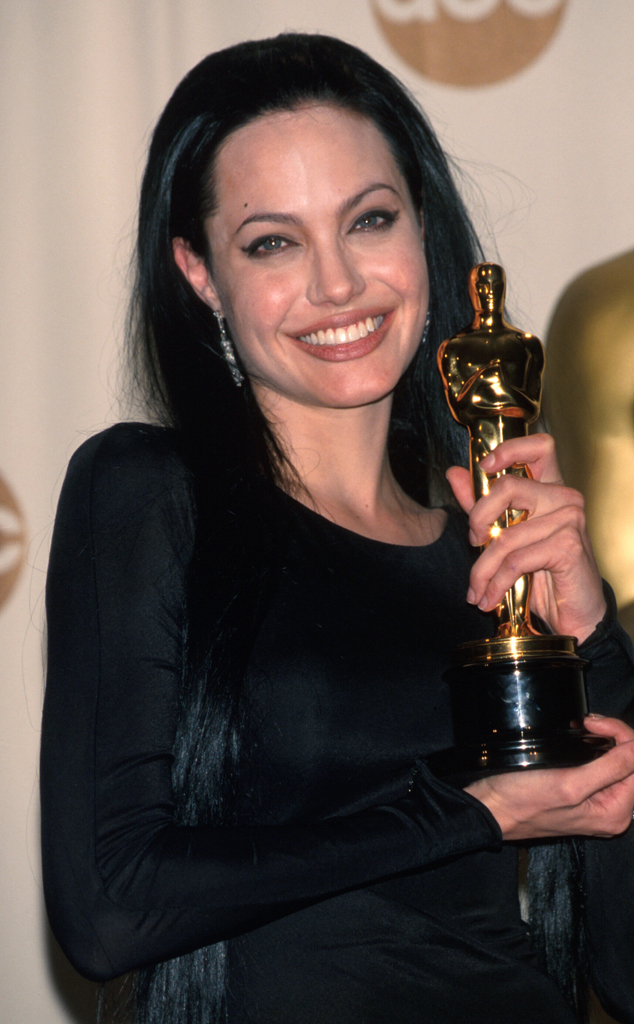
Mirek Towski/DMI/The LIFE Picture Collection via Getty Images
In addition to Girl, Interrupted, which just about made back its money, Jolie had also starred in The Bone Collector with Denzel Washington, a film that made $152 million in 1999, so a lot of people who didn’t see her in the former watched her in the latter, her first big-budget starring role opposite a mega movie star.
She married Thornton just a few months after she won her Oscar and life—though she’d only share it with Thornton for a few years—would never be the same. After the slew of headlines they made for their bloody excesses, she revamped her lifestyle to get super-fit to play Lara Croft in 2001’s Tomb Raider, became a mom to son Maddox in 2002 and, just two years later, met Brad Pitt.
And with that, her life transformed relatively quickly, though the enigmatic quality that made her an object of such rapt fascination would remain firmly intact.
At the fictional Claymore psychiatric hospital (they shot the institution scenes in the empty wing of a state hospital in Harrisburg, Pa.), the patients displayed a heartening, hilarious and sometimes destructive camaraderie, and the actresses seemed to really coalesce on set.
“They felt like a group and that made me happy,” Kaysen said in the HBO featurette, “because that was an important part of why I liked being in the loony bin to the extent that I did.”
But a few invisible walls were up when the cameras weren’t rolling.
“I remember thinking, ‘Oh we’re going to turn out to be great friends,'” Ryder recalled to Total Film about Jolie in 2010. “But I think she needed to be able to look at me just as the character Susanna, not as Winona, so in a very respectful way she just kind of kept her distance.” (Which makes sense when you consider the singular focus and connection Jolie had with her character even in hindsight.)
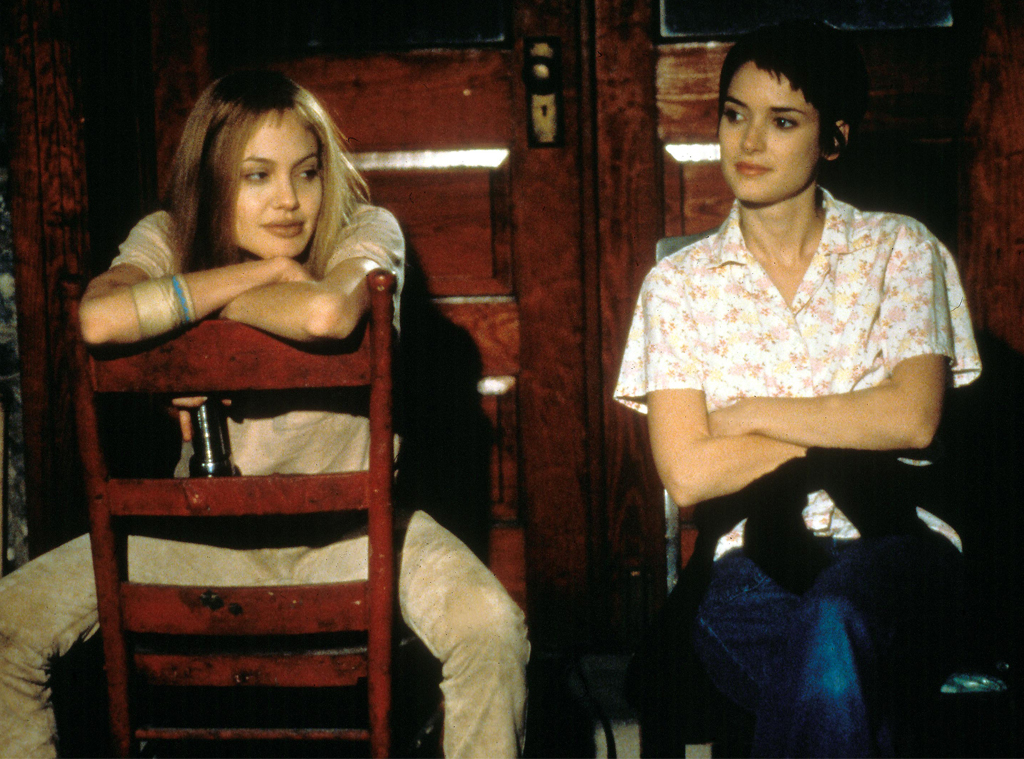
Moviestore Collection/Shutterstock
Ryder continued, “What she’s accomplished after the film in terms of humanitarian stuff, I’m just really happy she did that. I remember in the press junket for Girl, Interrupted she would just be so open about her problems and then I would come in and everyone would think I was so boring. So it’s really great to see she’s found her calling in her personal life.”
Ryder did become close friends with Murphy, whose agoraphobic character Daisy refuses to eat anything other than her deli owner father’s chicken and hoards the carcasses under her bed. Alone in her own apartment after being released from the hospital, Daisy ends up killing herself.
Almost 10 years to the day after the Girl, Interrupted came out, Murphy died suddenly of what later was determined to be complications of pneumonia, anemia and multiple drug intoxication.
Ryder admitted to Total Film that she couldn’t watch the movie anymore because of Murphy’s own tragic end.
But in the flush of the moment, in 1999, Murphy was having the time of her life.
Playing that character wasn’t “a matter of difficult, hard or easy…” the Clueless star said at the film’s premiere. “It’s just challenging or not challenging, or creatively rewarding or not—and it was creatively rewarding, and I really enjoyed doing this film very much.”
The rapport on set “was sort of wonderful,” Murphy said. “I liked working with everybody. Forget the fact that it was all actresses and all women—which is inspiring just in the fact that there was a script that had so many amazing roles for young women. They were extraordinary artists and extraordinary humans, and so I learned a lot about them in a humane manner and I learned a lot about them on camera in an artistic manner. And on all accounts that can’t possibly be wrong, it was fantastic.”
Meanwhile, Ryder and Jolie had opposite trajectories in the ’00s, as the former’s cachet began to dip after being the go-to face of the ’90s and the latter’s star—personally and professionally—rose ever higher. They’re only four years apart in age, but Ryder had already enjoyed a decade at the top of the heap when Girl, Interrupted came out and Hollywood still hadn’t figured out that actresses in their thirties were great at playing women in their thirties.
“It was hard to find that transition to adult roles,” Ryder told London’s Telegraph in 2014. “But I’m actually really enjoying getting older because I went through a period of time where I was technically old enough for roles but always associated with younger ones. The whole of my thirties was spent that way. Now that I’m in my forties it’s getting a little bit easier.”
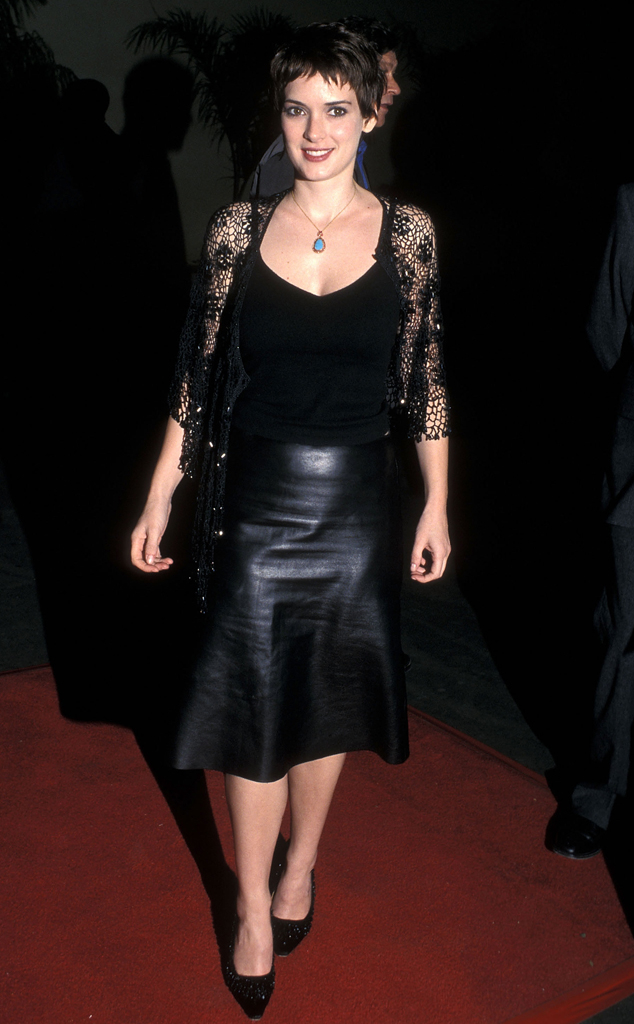
Ron Galella, Ltd./Ron Galella Collection via Getty Images
She also looked back on her arrest for shoplifting in 2001 as “the place where I just wanted to stop,” and that manifested itself in a dumb mistake. The ensuing break from the public eye was the silver lining, Ryder told Porter in 2016. “It allowed me time that I really needed, where I went back to San Francisco and got back into things that…I just had other interests, frankly.”
Incidentally, in addition to the movie stardom Ryder had also proceeded Jolie in headline-making romance, having already been engaged to heartthrob Johnny Depp. Then she was in a long-term relationship with Soul Asylum singer Dave Pirner, and was dating Matt Damon in late 1999 while out promoting Girl, Interrupted.
When she read the book in 1992, “I was just coming out of my very serious depression,” Ryder told the New York Times, “and I didn’t know what to label it, just as Susanna doesn’t know what to label hers.”

Suzanne Tenner/Columbia Tristar/Kobal/Shutterstock
Ryder told Diane Sawyer she remained drawn in by the very first paragraph of Kaysen’s book, which she read for the journalist:
“People ask, How did you get in there? What they really want to know is if they are likely to end up in there as well. I can’t answer the real question. All I can tell them is, It’s easy.”
She admitted being concerned that working in the close confines of an actual psychiatric hospital might prove traumatic, but she ended up being the rock that held the cast together.
“She never got lost in the material,” Mangold told the Times about Ryder. ”Because she was operating from experiences she had had, instead of from intellectual parallels, she spent a lot of time just remembering what it was like to be very deep inside herself. She gives a wonderful performance because she understood that the point of the book is that crazy isn’t all that different than normal, just a slightly amplified or skewed way of viewing things.”
As for Jolie, Mangold told Philadelphia City Paper in January 2000, “Even in the history of movie actors, Angie is very rare. She’s got balls the size of Volkswagens. She has this incredible majestic power, and yet incredible sensitivity as well. She speaks musically, and she’s almost a dancer on screen. She’s dangerous, charismatic, hilarious, frightening, fearsome. Bette Davis, Barbara Stanwyck, maybe a couple more are in her class, but that kind of energy is very unusual on film. [Ryder] is an orchid, but Angie’s a volcano.”
They knew it might be a tough watch, but everyone involved just hoped that people would find this movie that they were so proud of, which they felt really encapsulated what it felt like to be emotionally adrift and wondering if you’ll ever feel happy again, let alone normal. And what the hell does normal mean, anyway?
While a lot about this movie has become unintentionally startling—the powerhouse-in-waiting that is Jolie; still-figuring-it-out Jared Leto 15 years before his own Oscar win; Murphy’s chilling performance in light of her own premature death; future Emmy winner Elisabeth Moss as Polly, disfigured from setting herself on fire—the film itself still resonates in a perfectly relatable way.
“This movie will be an example,” Ryder told the Times. “If it does well, the studios may be inclined to make more personal movies and take more chances. Those are the movies that always end up being classics.”
